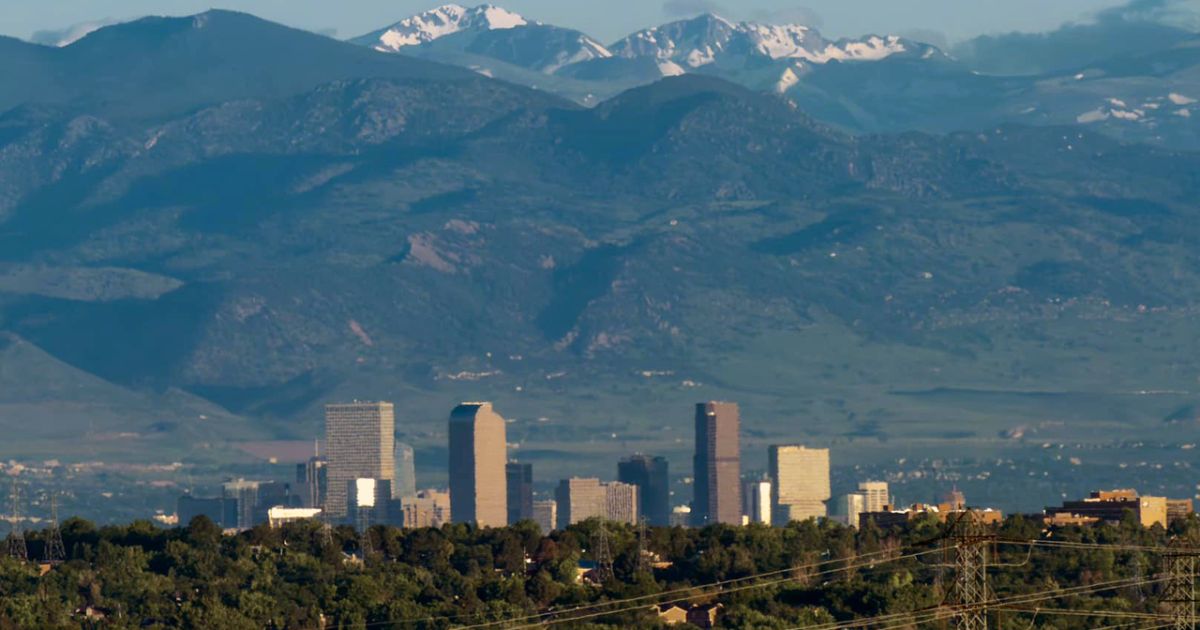A soggy June makes way for the potential of more rain in July
DENVER — As we dry off from the wettest June on record, Denver is preparing for the potential of another round of heavy rain in July as monsoon season gets ready to make its grand entrance.
Like most places in the country, July is Denver’s warmest month. It’s also the month when the North American monsoon shows up and we begin shifting from severe weather outbreaks over toward heavy rainfall.
Denver's monthly mean temperature for July is 74.2 degrees. The month starts out with a normal high of 87 degrees and ends with a normal high of 90 degrees. The daily average temperatures peak approximately four weeks after the summer solstice.
The warmest July occurred in 2012 when the monthly mean temperature reached 78.9 degrees. The hottest temperature ever recorded in Denver was 105 degrees on July 20, 2005. There have been 101 triple-digit occurrences in the city since records began in 1872, according to the National Weather Service.
KMGH
And when you bite down into what you think is a fully cooked July, you might come across a cool spot. July's coldest temperature ever recorded in Denver was 42 degrees and occurred on the 31st day of 1873.
The coolest July occurred in 1895 with a monthly mean temperature of 67.4 degrees. For low temperatures, the month of July begins with a normal of 57 degrees and finishes with a normal of 60. There has never been a report of snowfall in the month of July in Denver.
Rainfall totals from strong, rain-dumping thunderstorms are still the measure of interest. The mean monthly rainfall for the month is 2.16 inches. There is an average of eight days of measurable rainfall in July, according to the NWS. The wettest July occurred in 1965 when 6.41 inches of rain fell that month.
We typically experience the onset of the North American monsoon during July. It’s a seasonal change in the atmospheric circulation that occurs as the summer sun heats the continental land mass, according to the National Oceanic and Atmospheric Administration.
KMGH
And we have an El Nino that is now developed in the Pacific Ocean. That is when warmer water in the equatorial regions shifts the Jetstream and will oftentimes bring the monsoon rain to the Denver area a little later than normal, but it can also supercharge the monsoonal rainfall.
The soggy June we experienced has helped improve drought conditions in the state. As of Jul 1, most of Colorado is reporting "none" as far as dry conditions. Only the extreme southeast portion of the state is reporting "abnormally dry" conditions, according to U.S. Drought Monitor.
Mike Nelson has your July weather outlook in the video below:
July weather outlook with Mike Nelson
Severe weather season
Like June, low-level Gulf moisture often finds its way into Eastern Colorado, igniting an afternoon and evening of severe weather ranging from heavy rain to tennis ball-sized hail to tornadoes.
Colorado has entered peak tornado season. The state sees an average of 53 tornadoes per year, according to the National Oceanic and Atmospheric Administration. While June is more active, July sees an average about 11 tornadoes per year.
NWS
This past June has been especially active with several tornadoes reported on the Front Range and Eastern Plains. An EF-3 tornado tore through parts of Prowers County June 23, causing significant damage to several outbuildings and killing livestock.
EF-3 tornados have a 3.4% relative frequency of occurrence in Colorado, according to the Colorado Division of Homeland Security & Emergency Management. In 2007, an EF-3 tornado cut a four-block-wide swath through the town of Holly, destroying 35 homes and injuring 11 people.
Earlier in the week, a tornado touched down west of Sterling, destroying a house, garage and trees around the property. A day later, another destructive tornado hit Highlands Ranch in the Denver metro area.
Highlands Ranch tornado damage from AirTracker7
There have been more than 2,000 tornado events recorded in Colorado and at least five deaths related to twisters since 1950.
The most tornado-prone county in Colorado — and the entire country — is Weld County, which has seen 268 tornadoes since 1950. The city and county of Denver has seen 16 tornadoes in the same period.
The biggest tornado event that struck Denver was on June 15, 1988. Seven people were injured when an F-3 tornado touched down in the southern part of the city, cutting an erratic path 2.5 miles long. The storm damaged 85 buildings and several cars and uprooted trees.
Local News Colorado rain totals for June 29-30, 2023 storms Jeff Anastasio
The injuries were minor, but according to NWS reports, very traumatic for some of those involved. A golfer was thrown 40 feet but was not hurt. A man clinging to a telephone pole was unscathed but lost both of his shoes. A woman holding a baby was sucked through a broken window of a convenience store, but neither the woman nor the baby was hurt.
Tornadic activity doesn't always occur in the usual places in Colorado. Although extremely rare, tornadoes and funnel clouds have been spotted on the Western Slope and in high-altitude areas. There have been three tornado touchdowns in Park County, occurring on June 8, 2014, Aug. 18, 2009, and Aug. 23, 2008. In 2011, a tornado was documented on Mount Evans with an elevation of 11,900 feet. And on June 20, 1975, an F2 tornado touched down in Pitkin County.
On June 30, 2023, a funnel cloud was spotted east of Hartsel in South Park on Friday morning, according to the National Weather Service. The funnel cloud was reported near Wilkerson Pass and Elevenmile Canyon Reservoir and was moving northeast at about 30 mph, according to NWS.
Damaging hail is also a concern in July. Storms can produce hailstones up to the diameter of a fully-grown grapefruit. In a typical season, which is from mid-April to mid-August, the Front Range sees about three or four catastrophic hailstorms, according to the Rocky Mountain Insurance Information Association.
RMIIA
Colorado, along with Nebraska and Wyoming, makes up what meteorologists call “hail alley.” The area averages seven to nine hail days per year. According to the National Severe Storms Laboratory, the reason why this area gets so much hail is that the freezing levels (the area of the atmosphere at 32 degrees or less) in the high plains are much closer to the ground than they are at sea level, where hail has plenty of time to melt before reaching the ground.
To view July stats and data fullscreen on your computer or phone click here.
Source: Denver 7 Colorado News


